Digital workflow integration has become a defining factor in modern dental lab partnerships—influencing turnaround speed, remake rates, and overall collaboration stability. For dental procurement teams and lab decision-makers, assessing a lab’s technical capabilities is critical to ensure compatibility, precision, and scale.
A digitally mature dental lab should demonstrate:
- Seamless compatibility with STL, PLY, DCM files and leading intraoral scanners (3Shape, iTero, Medit, Planmeca)
- Reliable CAD/CAM infrastructure, including licensed design software and high-precision milling or 3D printing systems
- Structured workflow management, such as cloud-based intake portals, live case tracking, and revision coordination
- Pre-design quality assurance, including margin refinement, scan cleanup, and file integrity checks
- Trackable performance metrics like digital case volume, remake rates, and process-level SOP compliance
Procurement managers can use these benchmarks to shortlist qualified labs, request pilot runs, and validate digital readiness—ensuring efficient, scalable collaboration in fully digital workflows.
Why Does Technical Readiness Matter in a Digitally-Driven Workflow?
A dental lab’s digital readiness directly impacts the stability, efficiency, and reliability of modern case collaboration. When technical capabilities are lacking, even a seemingly simple digital case can encounter bottlenecks, miscommunication, or data errors that delay delivery and erode trust. For procurement decision-makers, understanding how digital maturity influences outcomes is critical to avoiding unexpected costs and case failures.

dental-lab-case-delay-due-to-scan-issue
How does lack of technical capability impact case timelines and remake rates?
Labs that lack essential digital infrastructure often introduce friction across the workflow. Common issues include file rejection, communication delays, and remakes caused by design inaccuracies. These breakdowns typically happen at moments where speed and clarity matter most:
- File formats from common scanners (e.g., 3Shape, iTero) may be incompatible or improperly processed.
- Margins may be misinterpreted without margin refinement tools, increasing remake risk.
- Lack of a shared portal or technician access may delay revision feedback.
When a single file fails or a technician misreads a prep line, the result is often multi-day delays, back-and-forth clarification, or reprints—all of which extend chair time and disrupt schedules.
What are the hidden costs of choosing a digitally unprepared lab?
Even when lab prices look competitive on paper, choosing a partner without solid digital readiness can lead to significant hidden costs:
- Increased remake rates consume chair time and lab capacity.
- Dental staff must spend time troubleshooting file issues instead of focusing on patient care.
- Delays impact patient satisfaction, especially for cosmetic or time-sensitive prosthetics.
These costs often go unnoticed during vendor selection but become painfully clear during routine case handling. Labs that appear affordable may ultimately generate more overhead due to inefficiencies and workflow mismatches.
Why is full integration—from scan to design to mill—critical for modern collaboration?
True digital readiness isn’t defined by having a scanner or using CAD software—it’s about system-level integration across every phase. Labs with integrated systems can receive, design, and manufacture cases in a synchronized, closed-loop workflow. This eliminates most data loss, formatting conflicts, or handoff issues. The benefits include:
- Seamless file reception of STL, PLY, or DCM formats without data distortion.
- CAD systems (like exocad or 3Shape) that match clinical software and avoid conversion loss.
- In-house 5-axis milling or high-resolution 3D printing for direct output from design files.
Without full integration, each handoff creates a potential failure point. In contrast, integration ensures that what’s scanned is what’s designed—and what’s delivered.
✅ Technical readiness means more than having digital tools – TRUE
It reflects whether a lab can execute consistently, at scale, with minimal friction, minimizing communication breakdowns and ensuring consistency in outcomes.
❌ Any lab with STL support is equally prepared for digital workflows – FALSE
Scanner acceptance is not the same as operational maturity. Labs that simply accept files may still lack process alignment, validation checkpoints, or integrated CAD/CAM systems, making technical gaps the weakest link in collaboration.
What File Formats and Scanner Systems Must Be Supported?
Compatibility in file formats and scanner systems forms the foundation of any efficient digital workflow. If a lab cannot seamlessly process your scanner’s output, the entire digital pipeline is at risk. Procurement teams should verify format and system support first—this step filters out labs that may struggle with data integrity, turnaround, and scanner-specific optimizations.
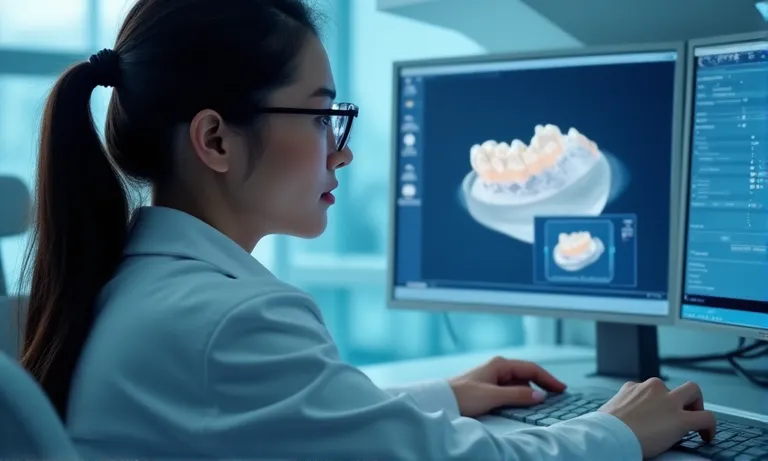
scanner-file-format-compatibility-check
Does the lab accept STL, PLY, OBJ, or other open-format files?
Open formats ensure true interoperability and preserve critical scan details. Labs should support:
- STL – universal mesh format, essential for all CAD/CAM processes
- PLY – includes color and texture, beneficial for cosmetic or implant cases
- OBJ – standard in 3D modeling, supports geometry with texture files
- Less common formats (OFF, AMF) may be required for advanced workflows
Supporting multiple formats reduces conversion errors and maintains scan fidelity. According to [Institute of Digital Dentistry], while STL remains the base standard, formats like PLY and OBJ are increasingly relevant for comprehensive digital workflows
Can the lab integrate with major scanners like 3Shape, iTero, Medit?
Supporting open formats alone isn’t enough; labs should integrate with closed scanner ecosystems:
| Scanner Brand | Format(s) | Lab Integration Requirement |
|---|---|---|
| 3Shape TRIOS | DCM / STL | Direct intake via 3Shape Communicate portal |
| iTero | iRecord / STL | MyiTero portal access + STL mesh validation |
| Medit | STL / PLY | Native PLY mesh handling + color support |
| Planmeca & others | PLY / DCM | Open library integration + DCM mesh parsing |
| Carestream | STL | Variant STL formatting + auto-snap feature |
Labs that actively support these systems can avoid metadata loss, margin errors, and scanner-specific issues while enabling faster throughput.
Is there seamless handling of closed scanner ecosystems?
Closed systems often require portal-based file delivery, not simple file uploads. Labs must demonstrate:
- Authenticated portal access (e.g., iTero, 3Shape)
- Capacity to process portal-delivered scan data without manual re-export
- Fallback workflows such as direct STL upload when portal access fails
This flexibility ensures you can onboard digital cases smoothly across multiple scanner platforms, avoiding delays due to connectivity or account issues.
Key Takeaways:
- Labs must natively support formats like STL, PLY, OBJ, and ideally OFF or AMF
- Confirm scanner-level compatibility with 3Shape, iTero, and Medit, not just general format support
- Ask about experience with portal-based submissions and backup methods for closed ecosystems for workflow reliability
What CAD/CAM Capabilities Signal Digital Maturity?
Digital maturity is not about owning CAD/CAM devices—it’s about how seamlessly design and production integrate to consistently deliver accurate, scalable outcomes. Labs with mature CAD/CAM workflows provide better fit rates, faster turnarounds, and predictable quality.
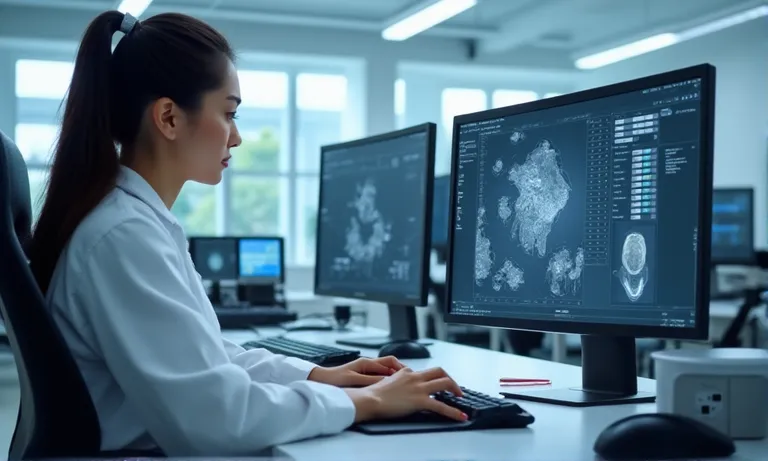
cad-cam-dental-lab-workstation
What CAD design systems are used?
Design software determines how accurately and flexibly a lab can create restorations. Labs should support:
- Exocad – open-architecture with strong implant and aesthetic modules
- 3Shape Dental System – known for its simplicity in full-arch and cosmetic cases
- Dental Wings or Maestro – useful for implant or orthodontic workflows
Supporting multiple platforms ensures compatibility with diverse clinic integration and minimizes file conversion errors.
Does the lab operate 5-axis milling machines and high-resolution 3D printers?
The level of milling and printing equipment reveals production precision:
- 5-axis milling systems provide complex geometry handling and fewer manual adjustments
- 4-axis mills are fine for crowns but limited in undercuts
- High-resolution DLP/SLA printers are essential for surgical guides and temporaries
- Multi-material capability (zirconia, PMMA, resins) signals versatility
Industry analysis shows that 5-axis CNC systems enable higher precision and smoother surface finish compared to 3-axis setups
How is precision and repeatability ensured from design to production?
Hardware must be supported by robust quality protocols. A mature CAD/CAM workflow follows:
- Scan validation with resolution checks
- Margin and contact verification during design using SOPs
- Virtual CAM simulation to avoid collisions
- Dry-run or prototype milling before final production
- Final quality inspection using fit-testing tools or scan reviews
This structured chain ensures each restoration meets quality benchmarks and reduces reliance on technician intuition.
✅ 5-axis systems reduce manual adjustments and improve restoration fit – TRUE
Integration of rotational axes allows precise machining in complex geometries, resulting in restorations that seat better and require less modification.
❌ Owning CAD/CAM equipment alone indicates digital maturity – FALSE
True maturity stems from integrated software platforms, standardized workflows, and rigorous quality control, not just tools.
What Workflow Management Tools Should Be in Place?
A lab’s ability to manage digital workflow isn’t just about equipment—it depends on how well the process is tracked, communicated, and coordinated from case intake to delivery. Without centralized systems, even the best digital scans can get lost in miscommunication, leading to delays, remakes, and frustration for clinics. The right tools can dramatically improve collaboration, visibility, and reliability.
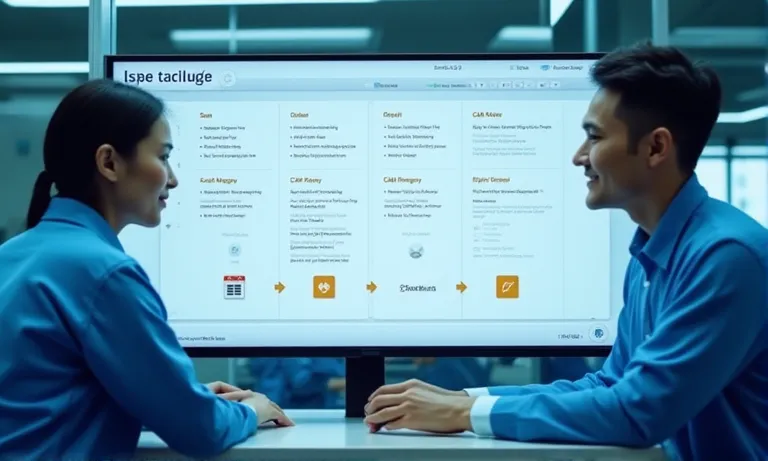
dental-lab-workflow-management-dashboard
Is there a digital intake portal or online file submission system?
The intake portal is your lab’s front door. Mature labs use cloud-based portals that let clinics:
- Upload STL, PLY, DCM files securely
- Tag cases by type (crown, implant, ortho)
- Assign priority or delivery deadline
- Auto-generate production ID and technician assignment
This eliminates fragmented email exchanges and lost files. According to Henry Schein’s lab, intake platforms significantly reduce communication bottlenecks and time spent on case clarification.
How does the lab manage real-time communication and revision feedback?
Communication must be embedded in the workflow—not handled separately through email or messaging apps. Look for:
- Integrated case messaging between technician and clinic
- Visual markup tools for margin, contact, or shade clarification
- Revision history tracking, including timestamps and approvals
- Case alerts for design confirmation, rework approval, or delivery change
These tools reduce errors caused by verbal confusion and support compliance documentation.
Can cases be tracked across stages in the workflow?
A transparent lab offers real-time case visibility across all phases. Your lab should enable:
- Scan acknowledgment: Confirmation that files are readable
- Design start notification: Technician has picked up the case
- CAM scheduling info: When the case enters milling/printing queue
- Delivery ETA update: Final dispatch with courier tracking
- Completion archive: A downloadable record of design and process log
This digital visibility helps clinics plan chair time and reduces follow-up messages to ask “Is it ready yet?”
✅ Using a workflow portal improves lab-clinic communication efficiency – TRUE
Portals centralize information, reduce misalignment, and enable faster response with visible status updates.
❌ Email and phone calls are sufficient for managing digital cases – FALSE
Traditional tools don’t scale, lack traceability, and introduce avoidable risk when managing high digital case volumes.
How Does the Lab Handle Data Preparation and Quality Assurance?
Not all scans are created equal. Even with advanced intraoral scanners, clinics often submit files that are incomplete, poorly margined, or require correction. A digitally capable dental lab should not passively accept flawed inputs—it must have clear protocols to clean, validate, and elevate incoming data before design begins. This is where true value is created.
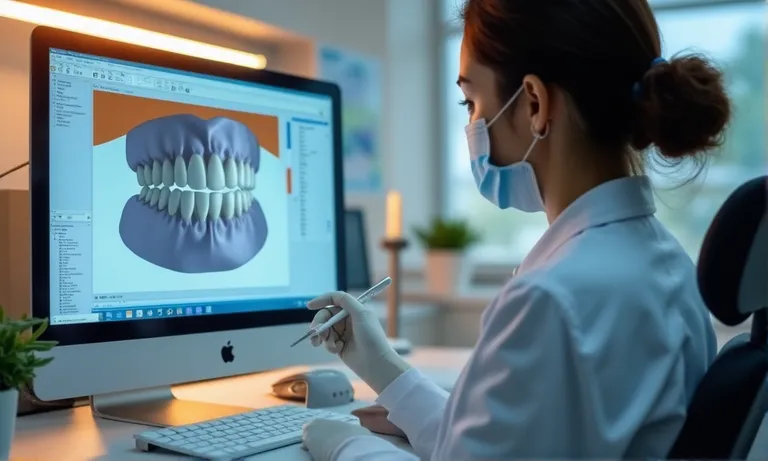
dental-lab-digital-scan-cleaning-process
Does the lab perform digital margin refinement or scan cleanup?
Most raw scans—even from top-tier scanners—require fine-tuning. A qualified lab will:
- Inspect margin clarity: blurred or incomplete margins are flagged
- Refine margins digitally using high-contrast modes and AI-assisted tools
- Clean scan noise, such as saliva streaks or soft tissue overlaps
- Fill incomplete data (e.g., buccal missing areas) via patching or rescan requests
These actions prevent downstream design errors and reduce the risk of misfit.
Is there a quality checkpoint before design begins?
Digital QA is critical. Before entering the CAD phase, a competent lab performs:
- File format validation: check for corrupt or incompatible STL/PLY/OBJ
- Resolution analysis: ensuring mesh density is sufficient for accuracy
- Anatomical completeness check: making sure all contact points are included
- Technician sign-off: a senior staff must approve scan integrity before design starts
This avoids wasted time designing on bad data—and builds trust with the clinic.
What protocols are used to handle incomplete or low-resolution scans?
Instead of silent rejection or “best effort” design, the lab should:
- Trigger a rescan request with annotated visual explanation
- Suggest margin-specific rescanning rather than full arch
- Use AI enhancement if small artifacts can be repaired
- Provide a pre-design report explaining limitations, risks, and expected outcomes
Proactive communication sets mature labs apart from passive ones—and saves clinicians from chairside surprises.
✅ Digital QA steps reduce remakes and delivery delays – TRUE
Early scan validation and cleanup prevent costly rework, improve lab efficiency, and deliver better-fitting restorations on first try.
❌ If the file opens, it’s ready for design – FALSE
Opening a file isn’t the same as validating it. Ignoring missing data, noise, or margin defects introduces hidden risks in downstream production.
What Metrics Indicate a Lab’s Digital Experience and Stability?
A lab’s ability to scale digital workflows consistently over time depends on measurable performance data—not promises. Evaluating specific indicators such as case volume, remake rates, and SOP implementation can offer a clear picture of how experienced and reliable a dental lab is in digital collaboration.
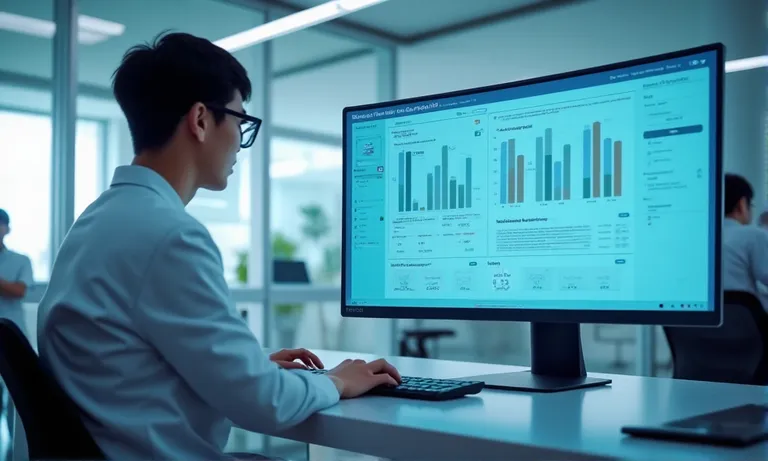
digital-lab-performance-metrics-dashboard
How many digital cases does the lab handle monthly?
Volume indicates exposure and process maturity. Labs that handle hundreds to thousands of digital cases per month are more likely to have tested systems and smoother workflows.
- Labs with high digital volume tend to have repeatable systems across scan → design → production
- Frequent handling of digital input formats increases reliability in parsing diverse scan data
- Case volume also shows adaptability to multi-scaler client needs—from solo practices to DSOs
Labs that only process a few digital orders sporadically often lack robust digital infrastructure, and may rely on manual intervention.
What is the remake rate on fully digital submissions?
Remake rate is a key signal of real-world performance. While 0% is unrealistic, a rate consistently below 3% is generally acceptable in full-digital workflows.
| Metric | Benchmark Standard | Evaluation Insight |
|---|---|---|
| Digital Remake Rate | <3% | Indicates strong data validation and QC processes |
| Margin Adjustment Requests | <10% | Reflects scan clarity and technician interpretation |
| First-Time Fit Rate | >90% | Measures design precision and CAM alignment |
Low remake rates mean fewer disruptions for clinics and reduced cost of corrections, especially important in high-volume DSO collaborations.
Are SOPs in place across scan → design → production?
Standard Operating Procedures (SOPs) create consistency and ensure team alignment, especially in multi-technician labs. Labs that use SOPs at every step of the digital flow minimize error due to technician variability.
- Scan verification SOPs ensure margin clarity and case readiness
- CAD design checklists guarantee anatomical accuracy and occlusal clearance
- CAM production SOPs ensure material compatibility and toolpath efficiency
Without SOPs, even a high-tech lab can suffer from human error and miscommunication, especially under load.
✅ More cases mean more maturity – TRUE
Labs with higher case volumes generally build faster feedback loops, resolve compatibility issues earlier, and stabilize workflow through repetition.
❌ Digital experience is just about having CAD machines – FALSE
Hardware alone doesn’t reflect digital readiness. Metrics like remake rate and SOP compliance show true capability.
What Questions Should You Ask When Evaluating Digital Capability?
Procurement teams evaluating a dental lab’s digital capability need clear, actionable questions to test readiness, compatibility, and real-world support. A well-prepared lab should be able to respond confidently with specific workflow details, not vague reassurances.
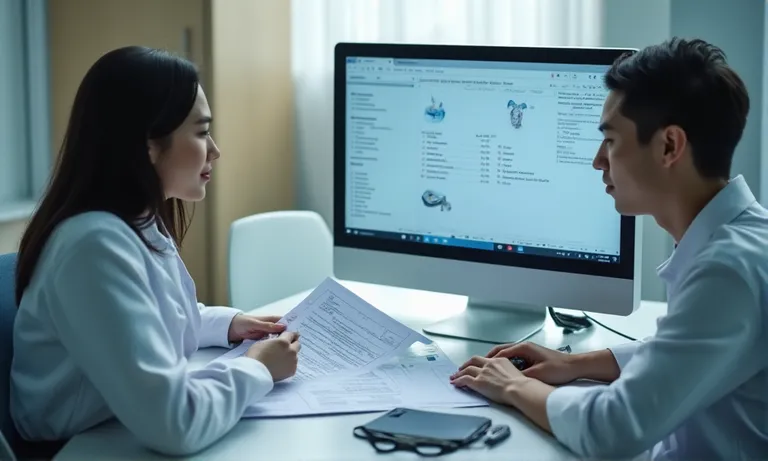
dental-lab-digital-capability-assessment-checklist
Which scanners and software versions do you support?
A digitally fluent lab should have a documented list of supported scanners and software versions. This includes open systems like 3Shape and Medit, as well as closed systems such as iTero and CEREC. Labs should also be able to advise on how to export files from less interoperable platforms.
- Open-format compatibility: STL, PLY, DCM
- Closed system workarounds (if needed)
- Version-level support and update handling
A lab that cannot provide version-specific compatibility details may be prone to file rejection or misalignment issues.
Can you provide an overview of your CAD/CAM equipment and workflow?
Understanding the full toolchain—from design software to fabrication—is key to evaluating technical maturity.
| Component | Preferred Configuration | Evaluation Insight |
|---|---|---|
| CAD Software | exocad, 3Shape (licensed versions) | Signals design precision + workflow control |
| Milling Machines | 4-axis / 5-axis (Roland, VHF, etc.) | Indicates fine margin control |
| 3D Printers | High-res resin printers (Asiga, NextDent, etc.) | Enables flexible delivery options |
This level of transparency shows readiness and eliminates assumptions during trial collaboration.
Is a trial submission available to test real-time compatibility?
Before committing to high-volume orders, labs should welcome small-scale test submissions to validate compatibility and turnaround.
- STL submission + margin review
- Turnaround timing trial
- Feedback cycle and adjustment willingness
A trial run uncovers friction points early—whether in file transfer, design logic, or communication delays—and helps both sides build trust.
✅ Prepared labs welcome detailed digital capability questions – TRUE
Labs with mature systems and equipment are transparent and supportive during technical evaluations.
❌ All scanners produce the same output, so any lab can work with them – FALSE
Scanner ecosystems vary widely. File integrity, margin clarity, and color depth can differ by system. Compatibility isn’t universal.
How Raytops Supports Digital Workflow Integration as a Global Lab Partner
Raytops Dental Lab supports clinics and distributors across digital workflows by offering full compatibility, collaborative protocols, and infrastructure tailored for modern restorative dentistry. Our focus is not on directing the clinical process, but on strengthening the lab-side execution that empowers seamless collaboration.
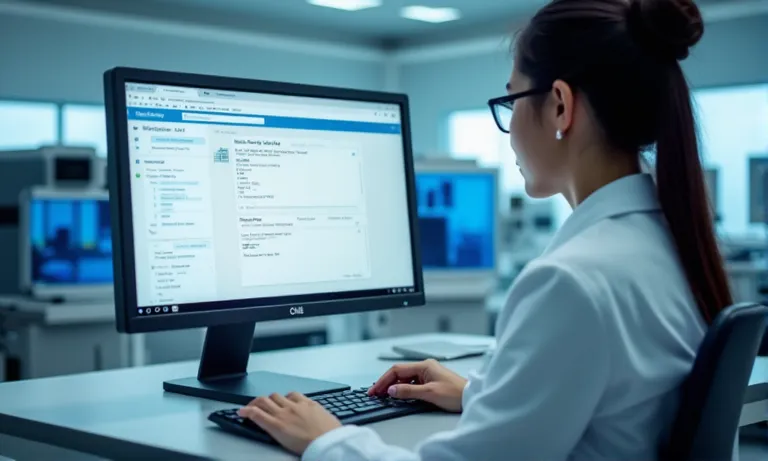
raytops-dental-lab-digital-integration-support
Compatibility with all major file types and scanner platforms
Raytops accepts and verifies all industry-standard formats including STL, PLY, and DCM. Our systems are preconfigured for smooth integration with 3Shape, iTero, Medit, and Planmeca scanners. For labs and clinics with closed ecosystems, we assist with file export protocols and interoperability checks before onboarding.
- Multi-format ingestion protocols ensure input flexibility
- Scanner-specific setup guidance upon request
- Internal QC for file completeness and artifact detection
STL validation, margin assistance, and pre-design QC support
Before entering CAD design, each submitted scan passes through a dedicated QC checkpoint. If issues are found—such as margin fuzziness or missing anatomy—our team offers suggestions, not clinical decisions.
- Margin enhancement via digital refinement tools
- Feedback sent within 12–24 hours for common issues
- No redesigns initiated without partner confirmation
This proactive support reduces remake rates and speeds case turnaround while staying within our technical role.
Real-time engineer support for case alignment and coordination
Our digital engineers are available during production hours to provide real-time feedback, address questions, or assist in cross-platform issues. This support is particularly valuable for clinics transitioning to fully digital workflows or conducting trial runs.
- Live engineering chat during case intake
- Scheduled feedback loops for complex restorations
- Shared visual tools (screenshots, annotations) to clarify design logic
We don’t just receive files—we collaborate. That’s the core of our integration promise.
Raytops’ digital coordination systems are built to complement and empower your workflow—not to replace it. By focusing on compatibility, transparency, and rapid response, we aim to make digital dentistry easier, faster, and more reliable for every client.
Conclusion
Digital integration is no longer a bonus—it’s the baseline for effective lab-clinic collaboration. For dental practices and distributors seeking stable, scalable partnerships, a lab’s ability to handle digital files, support scanner compatibility, and maintain workflow transparency can directly impact both clinical outcomes and operational efficiency.
At Raytops Dental Lab, we approach digital dentistry not as a trend, but as a long-term infrastructure commitment. From STL validation to platform support and responsive engineering coordination, our systems are designed to align with yours—quietly, reliably, and efficiently. By working with a digitally mature lab, clients gain more than just production; they gain a partner who understands the cost of errors, the value of speed, and the importance of being seen, heard, and supported across time zones.
Digital collaboration doesn’t mean handing over control—it means unlocking smoother execution through the right partnerships.


